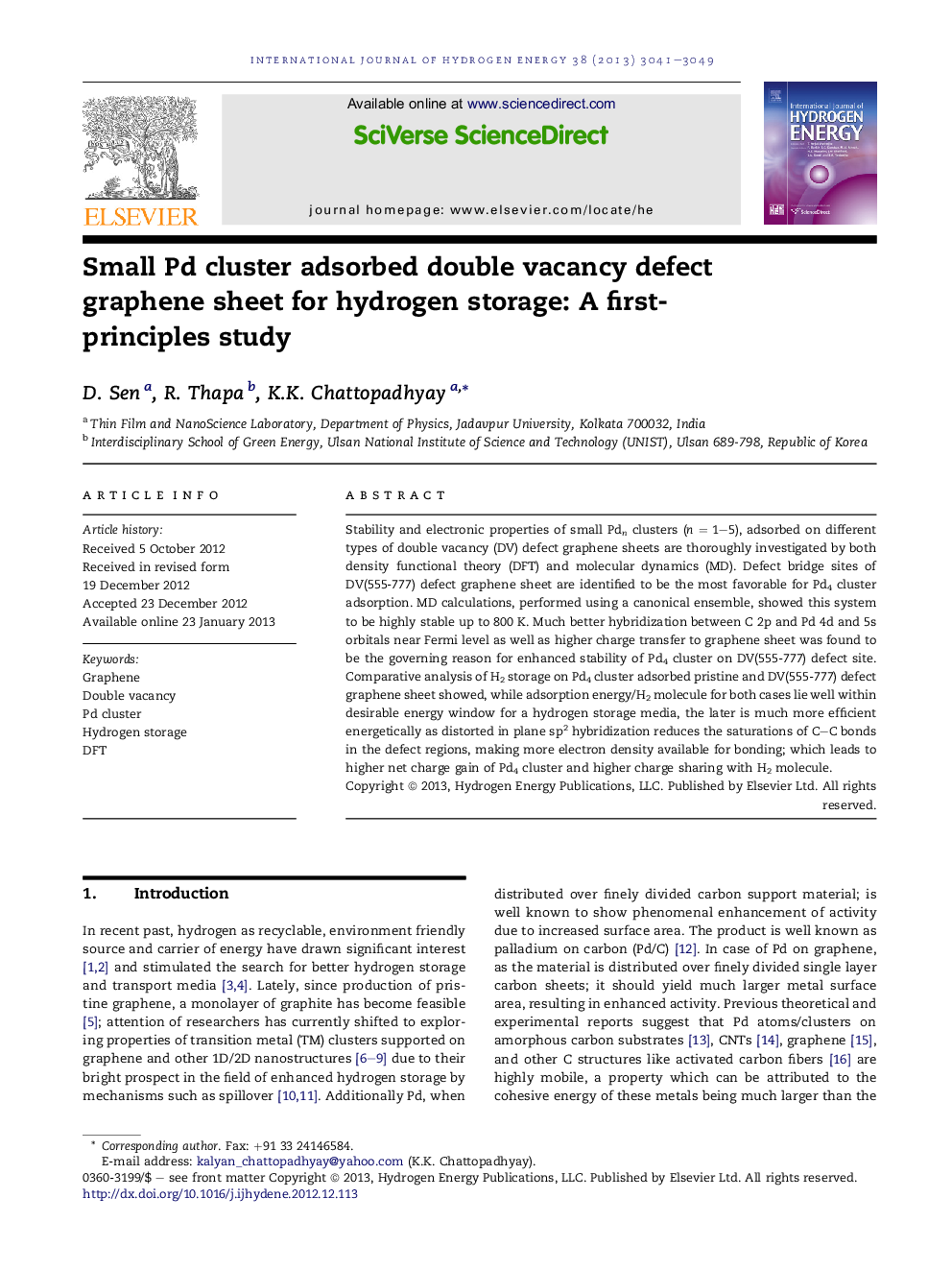| Article ID | Journal | Published Year | Pages | File Type |
|---|---|---|---|---|
| 1281971 | International Journal of Hydrogen Energy | 2013 | 9 Pages |
Stability and electronic properties of small Pdn clusters (n = 1–5), adsorbed on different types of double vacancy (DV) defect graphene sheets are thoroughly investigated by both density functional theory (DFT) and molecular dynamics (MD). Defect bridge sites of DV(555-777) defect graphene sheet are identified to be the most favorable for Pd4 cluster adsorption. MD calculations, performed using a canonical ensemble, showed this system to be highly stable up to 800 K. Much better hybridization between C 2p and Pd 4d and 5s orbitals near Fermi level as well as higher charge transfer to graphene sheet was found to be the governing reason for enhanced stability of Pd4 cluster on DV(555-777) defect site. Comparative analysis of H2 storage on Pd4 cluster adsorbed pristine and DV(555-777) defect graphene sheet showed, while adsorption energy/H2 molecule for both cases lie well within desirable energy window for a hydrogen storage media, the later is much more efficient energetically as distorted in plane sp2 hybridization reduces the saturations of C–C bonds in the defect regions, making more electron density available for bonding; which leads to higher net charge gain of Pd4 cluster and higher charge sharing with H2 molecule.
Graphical abstractFigure optionsDownload full-size imageDownload as PowerPoint slideHighlights► DFT calculations reveal excellent stability of Pd4 clusters on defect graphene. ► Pd4 cluster distribution on DV(555-777) defect graphene is uniform and immobile. ► Pd4-DV graphene adsorbs upto five H2 with −0.639 eV adsorption energy per H2.
